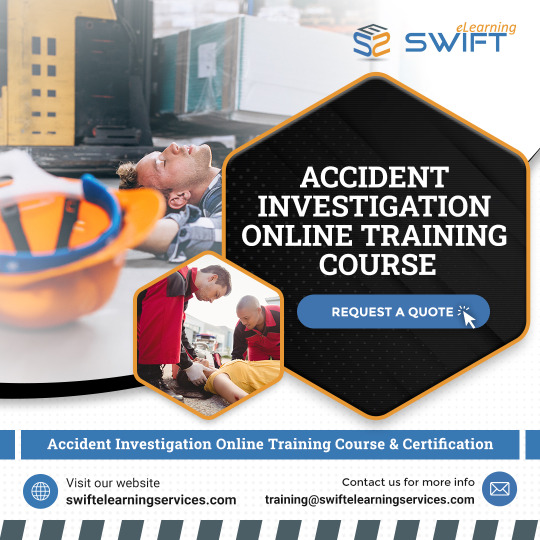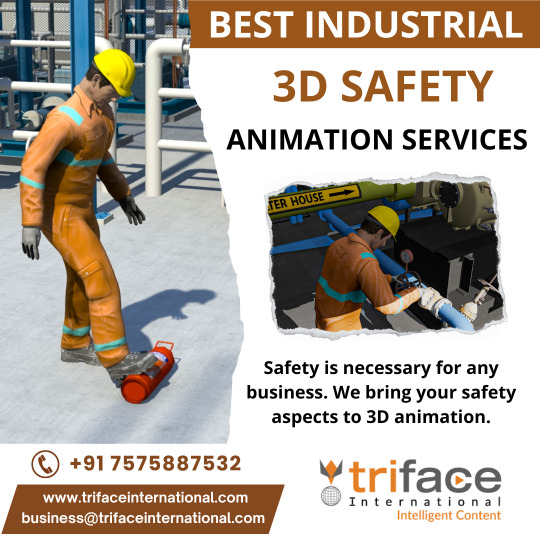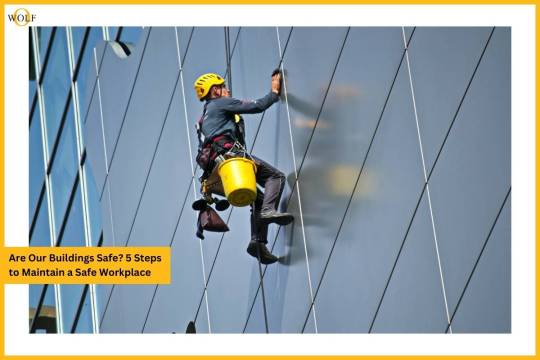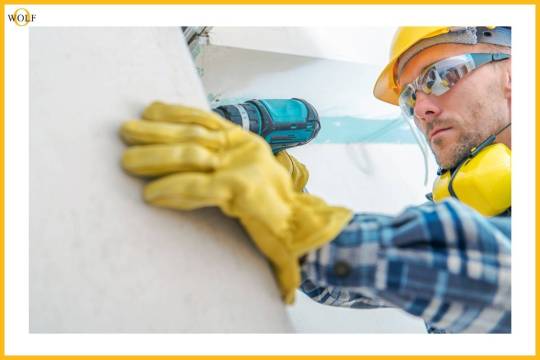#safetytrainings
Explore tagged Tumblr posts
Text
𝗦𝘂𝗽𝗲𝗿𝘃𝗶𝘀𝗼𝗿 𝗖𝗼𝗺𝗽𝗲𝘁𝗲𝗻𝗰𝘆 𝗦𝗮𝗳𝗲𝘁𝘆 𝗖𝗼𝘂𝗿𝘀𝗲 𝗮𝗻𝗱 𝗖𝗲𝗿𝘁𝗶𝗳𝗶𝗰𝗮𝘁𝗶𝗼𝗻 - 𝗗𝘂𝘁𝘆 𝘁𝗼 𝗔𝗰𝗰𝗼𝗺𝗺𝗼𝗱𝗮𝘁𝗲
📢 Are you a supervisor looking to enhance workplace safety, meet legal obligations, and protect your team from potential hazards? Look no further!
🎯 Our 𝗦𝘂𝗽𝗲𝗿𝘃𝗶𝘀𝗼𝗿 𝗖𝗼𝗺𝗽𝗲𝘁𝗲𝗻𝗰𝘆 𝗦𝗮𝗳𝗲𝘁𝘆 𝗖𝗼𝘂𝗿𝘀𝗲 is your comprehensive solution!
Learn key safety skills like risk assessment, hazard control, and incident investigation. Plus, we dive deep into critical topics supervisors need to know:
✔️ 𝗗𝘂𝘁𝘆 𝘁𝗼 𝗔𝗰𝗰𝗼𝗺𝗺𝗼𝗱𝗮𝘁𝗲 – Ensure you're supporting your team with fairness and inclusivity by understanding your legal obligations to accommodate employees facing barriers.
✔️ 𝗘𝗮𝗿𝗹𝘆 𝗮𝗻𝗱 𝗦𝗮𝗳𝗲 𝗥𝗲𝘁𝘂𝗿𝗻 𝘁𝗼 𝗪𝗼𝗿𝗸 – Help employees reintegrate after injury or illness with confidence, creating a safer and more productive workplace.
✔️ 𝗪𝗼𝗿𝗸𝗽𝗹𝗮𝗰𝗲 𝗩𝗶𝗼𝗹𝗲𝗻𝗰𝗲 𝗮𝗻𝗱 𝗛𝗮𝗿𝗮𝘀𝘀𝗺𝗲𝗻𝘁 – Prevent and respond to workplace violence and harassment with effective strategies, building a safe, respectful work environment for everyone.
👨💼👩💼 This online program is designed to make YOU a stronger, more capable leader who prioritizes safety and compliance. By the end of the course, you'll be fully certified to implement safety strategies, manage return-to-work plans, and foster a healthy, violence-free workplace.
🎓 Get certified today and lead your team to safety success!
🔗 On-screen text: 𝗖𝗹𝗶𝗰𝗸 𝘁𝗵𝗲 𝗹𝗶𝗻𝗸 𝗯𝗲𝗹𝗼𝘄 𝘁𝗼 𝗲𝗻𝗿𝗼𝗹𝗹 𝗻𝗼𝘄! Subscribe for more safety tips and updates!
𝑽𝒊𝒔𝒊𝒕 𝒕𝒉𝒆 𝒍𝒊𝒏𝒌𝒔 𝒕𝒐 𝒍𝒆𝒂𝒓𝒏 𝒎𝒐𝒓𝒆 𝒂𝒃𝒐𝒖𝒕 𝑺𝒖𝒑𝒆𝒓𝒗𝒊𝒔𝒐𝒓 𝑪𝒐𝒎𝒑𝒆𝒕𝒆𝒏𝒄𝒚 𝑴𝒐𝒅𝒖𝒍𝒆 03. https://www.swiftelearningservices.com/supervisor-competency-training-online-course-and-certification/
𝑪𝒐𝒏𝒕𝒂𝒄𝒕 𝑬𝒎𝒂𝒊𝒍: 𝒕𝒓𝒂𝒊𝒏𝒊𝒏𝒈@𝒔𝒘𝒊𝒇𝒕𝒆𝒍𝒆𝒂𝒓𝒏𝒊𝒏𝒈𝒔𝒆𝒓𝒗𝒊𝒄𝒆𝒔.𝒄𝒐𝒎 𝒇𝒐𝒓 𝒎𝒐𝒓𝒆 𝒊𝒏𝒇𝒐𝒓𝒎𝒂𝒕𝒊𝒐𝒏. https://www.swiftelearningservices.com/contact-us/
#supervisortraining#supervisorcompetency#training#safety#healthandsafetytraining#supervisorcompetencytraining#supervisorsafety#dutytoaccommodate#topicscontinued#safetytraining#safetyfirst#courses#onlinecourses#canada#online
2 notes
·
View notes
Text
The history, techniques, and styles of 2D animation, from classic hand-drawn cartoons to modern anime and everything in between.
youtube
#triface#trifaceinternational#3danimation#animation#animation3d#animation2d#animationart#animationvideo#animationdesign#safety#safetytips#safetytraining#safetyriding#safetyanimation#industrial#industrialdesign#industrialestate#GIDC#2d animation#youtube#graphic design#2d animated movie#architecture#Youtube
2 notes
·
View notes
Text

NEBOSH IGC Raffle Draw Offer in Mumbai
Celebrate the 1800th NEBOSH IGC Batch with Green World Group! Enroll now and get IOSH, OSHA, IMS, and 14 HSE Courses at an offer price. Don’t miss the chance to win a 100% cashback in our exclusive raffle draw! Offer valid till 31st January 2025, with the draw on 1st February 2025.
Batch dates: 27th Jan – 28th Feb 2025. Grab this opportunity and elevate your career today!
Contact: Ms. Neha Mahto
+91 9324148531
Visit us: https://greenwgroup.co.in/training-courses/nebosh/nebosh-igc/
0 notes
Text
"GROWTH STARTS WITH A SEED OF KNOWLEDGE!" NEVER STOP LEARNING.
1 note
·
View note
Text

വിദേശ ജോലി സ്വപ്നം കണ്ടാൽ മതിയോ, നേടിയെടുക്കേണ്ടേ? എങ്കിൽ ആ സ്വപ്നം സാധ്യമാക്കാം സേഫ്റ്റി മേഖലയിൽ. ഇന്ത്യയിലും വിദേശത്തും ഉയർന്ന സാലറിയും ഒപ്പം ഉയർന്ന സേഫ്റ്റി കരിയറും ആരംഭിക്കുവാൻ NEBOSH തിരഞ്ഞെടുക്കുന്നതിലൂടെ സാധ്യമാകുന്നു. കൂടാതെ നിലവിൽ ജോലി ചെയ്യുന്നവർക്കും പഠിക്കുന്നവർക്കും കുറഞ്ഞ സമയത്തിനുള്ളിൽ സേഫ്റ്റി സ്കിൽസ് വർദ്ധിപ്പിക്കുവാനും NEBOSH IGC കോഴ്സ് സഹായിക്കുന്നു. ഇനി ഉയർന്ന കരിയർ അവസരങ്ങൾക്കായി സേഫ്റ്റി മേഖല തിരഞ്ഞെടുക്കൂ.
Learn NEBOSH IGC Kerala's leading NEBOSH, IOSH, OSHA training center Inspirit Safety Solutions Pvt Ltd
For Enquiries: 🌐 www.inspiritsafetysolutions.com ☎️ +91 8943252627, +91 8801252627, +91 8113034966 ⏩ Follow the Inspirit channel on WhatsApp: https://whatsapp.com/channel/0029VaADGWkJJhzeWeeNmz1m
#NEBOSHtraining#NEBOSH#inspiritsafetysolutions#NEBOSHIGC#safetytraining#safetycourses#neboshtraining#nebosh
0 notes
Text
0 notes
Text

Is your Process Safety Management as robust as it should be? Process safety requires more than checklists—it demands real-time tracking, clear oversight, and actionable insights. That’s why we’re excited to launch the PSM Dashboard on the ISP portal, setting a new standard in safety excellence! With this tool you can: ✅ Track progress across PSM elements ✅ Monitor completion status by department ✅ Create and manage bow-tie diagrams for hazard assessment ✅ Visually represent threats, barriers, and controls ✅ Enhance risk management and decision-making With modules like HHPC, we’re taking safety to the next level by enabling systematic hazard identification, compliance, and improved stakeholder communication.https://coreehs.com/software/process-safety-management-software/
#ProcessSafety#PSM#SafetyManagement#RiskManagement#SafetyCulture#WorkplaceSafety#IndustrialSafety#SafetyFirst#SafetyExcellence#SafetyStandards#OperationalExcellence#HazardPrevention#WorkplaceRisk#SafetyCompliance#SafetyTraining#ProcessSafetyManagement#SafetySystems#IncidentPrevention#SafetyAudit#RiskAssessment#ProcessSafetyCulture
0 notes
Text
Safety Protocols in Production Facilities
https://visionarycios.com/wp-content/uploads/2024/11/1.-Safety-Protocols-in-Production-Facilities-Source-gilaxia-from-Getty-Images-Signature.jpg
Source: gilaxia from Getty Images Signature
In the fast-paced world of manufacturing and production, ensuring safety is paramount. Safety protocols in production facilities are designed to minimize risks, protect workers, and maintain operational efficiency. This article delves into the various safety protocols essential for production facilities, exploring their significance, implementation strategies, and the impact they have on overall productivity.
Understanding Safety Protocols
Safety protocols in production facilities refer to a set of guidelines and procedures established to ensure the well-being of employees while mitigating risks associated with hazardous environments. These protocols encompass a wide range of practices, including machinery operation, material handling, chemical safety, emergency response, and ergonomic considerations.
The significance of adhering to safety protocols cannot be overstated. According to the International Labor Organization (ILO), approximately 2.78 million workers die from work-related accidents and diseases each year. This staggering statistic highlights the need for effective safety measures in every production environment. Implementing robust safety protocols not only protects workers but also enhances productivity and minimizes financial losses associated with workplace injuries.
Key Safety Protocols in Production Facilities
1. Hazard Identification and Risk Assessment
Before establishing safety protocols in production facilities, it is crucial to identify potential hazards and assess the associated risks. This process involves systematically evaluating the work environment to pinpoint sources of danger. Common hazards include:
Chemical Exposure: Chemicals used in production processes can pose serious health risks.
Machinery Risks: Equipment malfunction or improper use can lead to injuries.
Ergonomic Hazards: Repetitive motions or poor posture can result in musculoskeletal disorders.
Conducting regular risk assessments allows organizations to prioritize safety measures and allocate resources effectively.
2. Training and Education
https://visionarycios.com/wp-content/uploads/2024/11/1.1.-Training-and-Education-Source-gorodenkoff-from-Getty-Images.jpg
Safety Procedures: Workers must understand the specific protocols related to their roles.
Emergency Response: Employees should be familiar with evacuation routes, first aid procedures, and how to respond to hazardous situations.
Use of Personal Protective Equipment (PPE): Training on the proper use of PPE, such as helmets, gloves, and goggles, is essential to minimize exposure to risks.
Continuous education ensures that workers are updated on best practices and new safety regulations.
3. Regular Inspections and Maintenance
Routine inspections and maintenance are critical components of safety protocols in production facilities. Regular checks help identify potential issues before they escalate into serious problems. Key areas to focus on include:
Equipment Functionality: Ensure that machinery is in good working condition and adheres to safety standards.
Cleanliness: A clean work environment reduces the risk of accidents and promotes overall safety.
Safety Signage: Clear and visible signage should be placed throughout the facility to remind workers of safety protocols and potential hazards.
By maintaining a proactive approach to inspections and maintenance, organizations can significantly reduce the likelihood of accidents.
4. Emergency Preparedness
https://visionarycios.com/wp-content/uploads/2024/11/1.2.-Emergency-Preparedness-Source-Ratiger-from-Getty-Images-Signature.jpg
Emergency Plans: Develop and communicate detailed emergency response plans for various scenarios, such as fires, chemical spills, or natural disasters.
Drills and Simulations: Conduct regular drills to familiarize employees with emergency procedures and improve their response time.
Emergency Contacts: Maintain an updated list of emergency contacts and resources readily available to all employees.
A well-prepared workforce can respond effectively to emergencies, reducing the potential for injury and property damage.
5. Cultivating a Safety Culture
Creating a culture of safety within production facilities is one of the most effective ways to ensure compliance with safety protocols. This involves:
Leadership Commitment: Management should demonstrate a genuine commitment to safety, encouraging open communication and feedback.
Employee Involvement: Encourage employees to participate in safety committees, suggesting improvements and sharing their experiences.
Recognition Programs: Acknowledge and reward safe practices to motivate employees to prioritize safety.
A strong safety culture fosters an environment where workers feel empowered to adhere to safety protocols and report hazards without fear of reprisal.
The Impact of Safety Protocols
https://visionarycios.com/wp-content/uploads/2024/11/1.3.-The-Impact-of-Safety-Protocols-Source-ALotOfPeople-from-Getty-Images-Pro.jpg
Reduced Injury Rates: A strong focus on safety minimizes workplace injuries and associated costs, including medical expenses and workers’ compensation claims.
Increased Productivity: A safe work environment enhances employee morale and productivity, as workers can focus on their tasks without fear of accidents.
Enhanced Reputation: Companies that prioritize safety build a positive reputation, attracting talent and potential clients who value responsible business practices.
Conclusion
In conclusion, safety protocols in production facilities are essential for protecting workers, enhancing productivity, and maintaining operational efficiency. By implementing key safety measures such as hazard identification, training, regular inspections, emergency preparedness, and cultivating a safety culture, organizations can create a safer work environment. Prioritizing these safety protocols not only reduces the risk of accidents but also contributes to the overall success and sustainability of production facilities. Embracing safety as a core value is not just a regulatory requirement; it is a commitment to the well-being of employees and the future of the organization.
#safetyboots#safetyharbor#safetytraining#safetyglasses#safetygear#safetymeeting#safetynet#safetybeach#safetybelt#safetygate
0 notes
Link

Unforeseen accidents can happen anytime, anywhere. Equip yourself with the necessary skills to investigate and prevent them with our Accident Investigation Training Online Course and Certification. Enroll now and gain the knowledge and expertise to create safer environments for yourself and your colleagues. 🚨🔍💻
📢 Don't wait any longer, register today and take the first step towards upskilling yourself and your team! 🚀 https://www.swiftelearningservices.com/accident-investigation-training-online-course-and-certification/
2 notes
·
View notes
Text

We have expertise in building 3D safety animation for industrial and manufacturing sector. Safety is necessary for any business. We bring your safety aspects to 3D animation.
Read More:
www.trifaceinternational.com/work/3d-animation/3d-safety-animation-agency
Get In Touch With Us For More Detail.
Email : [email protected]
Call Now : +91 7575887532
#triface#trifaceinternational#3danimation#animation#animation3d#animation2d#animationart#animationvideo#animationdesign#safety#safetytips#safetytraining#safetyriding#safetyanimation#industrial#industrialdesign#industrialestate#GIDC#2d animation#youtube#graphic design#2d animated movie#architecture
2 notes
·
View notes
Text
Enhance workplace safety with expert Safety Risk Management Training in Greater Noida by Lunima Safety Solution. Equip your team with the skills to identify, assess, and manage safety risks effectively.
0 notes
Text

What Jobs Can I Get with NEBOSH Certification?
Achieving your career aspirations and working in a field you're passionate about is a goal many strive for. If you're a safety enthusiast, obtaining a NEBOSH Qualification can be your ticket to a fulfilling and in-demand career in health and safety.
The importance of safety professionals has grown immensely in recent years. Industrial sectors are now obligated to hire qualified experts to manage workplace health and safety, largely due to rising workplace accidents and the tightening grip of national and international regulations. Employers increasingly recognize that accidents are not just tragic but costly, involving litigation, fines, and reputational damage.
READ MORE
#safetycourses#neboshtraining#nebosh#neboshonline#safetytraining#neboshexam#neboshigc#nebosh idip#safety diploma#safety jobs
0 notes
Text
Are Our Buildings Safe? 5 Steps to Maintain a Safe Workplace

In today’s fast-paced and dynamic work environment, ensuring the safety of buildings and creating a safe workplace is paramount for employers, employees, and stakeholders alike. A safe workplace is not only a legal obligation but also a critical factor in enhancing productivity, employee satisfaction, and overall business success. This comprehensive article delves into the importance of maintaining building safety and outlines five crucial steps to ensure a safe workplace.
The Importance of Building Safety
Legal and Regulatory Compliance
Adhering to safety regulations and building codes is mandatory for all businesses. Regulatory bodies like OSHA (Occupational Safety and Health Administration) in the United States set stringent guidelines to ensure that workplaces are free from hazards that could cause harm to employees. Non-compliance can lead to severe penalties, legal repercussions, and damage to the organization’s reputation.
Protecting Human Lives
The primary goal of maintaining a safe workplace is to protect human lives. Employees spend a significant portion of their day within the workplace, making it essential to create an environment where they feel secure. Accidents, injuries, and fatalities can be prevented by adhering to safety standards and continuously improving safety protocols.
Enhancing Productivity and Morale
A safe workplace directly impacts employee productivity and morale. When employees feel safe, they are more likely to be engaged, motivated, and focused on their tasks. Conversely, a workplace with safety concerns can lead to stress, anxiety, and decreased productivity. By prioritizing safety, businesses can foster a positive work environment that promotes efficiency and job satisfaction.
Reducing Financial Liabilities

Workplace accidents and injuries can result in substantial financial liabilities for businesses. Medical expenses, compensation claims, legal fees, and repair costs can quickly accumulate, affecting the company’s bottom line. Implementing robust safety measures helps mitigate these risks, ultimately saving money and resources in the long run.
5 Steps to Maintaining a Safe Workplace
1. Conduct Regular Safety Audits
Regular safety audits are crucial for identifying potential hazards and ensuring compliance with safety standards. These audits should be conducted by trained professionals who can thoroughly assess the building’s infrastructure, equipment, and safety protocols.
Identifying Potential Hazards
During a safety audit, inspectors examine various aspects of the workplace, including structural integrity, electrical systems, fire safety measures, and emergency exits. Identifying potential hazards allows businesses to take proactive measures to address them before they escalate into serious issues.
Ensuring Compliance
Safety audits also involve reviewing compliance with local, state, and federal regulations. Inspectors check for adherence to building codes, fire safety standards, and occupational health and safety guidelines. By ensuring compliance, businesses can avoid legal troubles and create a safer work environment.
Continuous Improvement
Regular audits provide valuable insights into areas that require improvement. Businesses can use audit findings to update safety protocols, invest in necessary repairs, and enhance overall workplace safety. Continuous improvement is key to maintaining a safe workplace over time.
2. Implement Comprehensive Safety Training Programs
Educating employees about safety protocols and best practices is essential for creating a culture of safety within the workplace. Comprehensive safety training programs equip employees with the knowledge and skills needed to identify and respond to potential hazards effectively.
Orientation and Onboarding
Safety training should begin during the orientation and onboarding process. New employees should receive detailed instructions on emergency procedures, evacuation plans, and the proper use of safety equipment. Providing this information from the outset sets the tone for a safe workplace.
Ongoing Training and Refresher Courses
Safety training should be an ongoing process. Regular training sessions and refresher courses help reinforce safety protocols and keep employees updated on any changes to safety procedures. Interactive training methods, such as hands-on drills and simulations, can enhance learning and retention.
Specialized Training
Certain industries and job roles may require specialized safety training. For example, construction workers need training on working at heights, while laboratory personnel require instruction on handling hazardous materials. Providing tailored training ensures that employees are well-prepared for the specific risks associated with their roles.
3. Maintain Proper Equipment and Infrastructure
Ensuring that all equipment and infrastructure are in good working condition is critical for maintaining a safe workplace. Regular maintenance, timely repairs, and proper upgrades contribute to the overall safety of the building and its occupants.
Regular Maintenance Schedules

Establishing regular maintenance schedules for equipment and infrastructure helps prevent unexpected failures and accidents. This includes routine checks on HVAC systems, electrical wiring, plumbing, and fire safety equipment. Scheduled maintenance reduces the risk of malfunctions and extends the lifespan of critical systems.
Timely Repairs and Upgrades
When issues are identified, timely repairs are essential to prevent them from becoming larger problems. Additionally, upgrading outdated or worn-out equipment can enhance safety and efficiency. Investing in modern safety technologies, such as automated fire detection systems and advanced security cameras, can provide an added layer of protection.
Safety Inspections
Regular safety inspections should be conducted to identify any wear and tear or potential hazards. Inspectors can assess the condition of safety equipment, such as fire extinguishers, emergency lighting, and exit signs. Ensuring that these components are in optimal condition is vital for maintaining a safe workplace.
4. Promote a Safety-First Culture
Creating a safety-first culture requires active participation and commitment from all levels of the organization. Leadership plays a crucial role in setting the tone for safety, while employee involvement ensures that safety practices are embraced and upheld throughout the workplace.
Leadership Commitment
Leaders and managers must prioritize safety and demonstrate their commitment through actions and policies. This includes allocating resources for safety initiatives, addressing safety concerns promptly, and leading by example. When employees see that leadership values safety, they are more likely to follow suit.
Employee Involvement
Encouraging employee involvement in safety initiatives fosters a sense of ownership and responsibility. Establishing safety committees, conducting regular safety meetings, and inviting feedback from employees can lead to valuable insights and improvements. Recognizing and rewarding employees for their contributions to safety can also motivate others to participate actively.
Clear Communication
Effective communication is essential for promoting a safety-first culture. Clear and transparent communication channels ensure that safety information is disseminated promptly and accurately. This includes sharing safety updates, incident reports, and best practices. Encouraging open dialogue about safety concerns helps address issues before they escalate.
5. Emergency Preparedness and Response Planning
Being prepared for emergencies is a fundamental aspect of maintaining a safe workplace. Comprehensive emergency preparedness and response planning ensure that employees know how to react in various emergency situations, minimizing risks and enhancing safety.
Emergency Plans and Procedures
Developing detailed emergency plans and procedures is the first step in emergency preparedness. These plans should cover a range of scenarios, including fires, natural disasters, medical emergencies, and security threats. Clear and concise procedures provide employees with step-by-step instructions on how to respond effectively.
Regular Drills and Exercises

Conducting regular emergency drills and exercises helps familiarize employees with emergency procedures and ensures a swift and coordinated response. Evacuation drills, fire drills, and first aid training sessions are valuable tools for enhancing preparedness. Drills should be conducted periodically and evaluated to identify areas for improvement.
Access to Emergency Resources
Ensuring that emergency resources are readily available is critical for effective response. This includes maintaining well-stocked first aid kits, fire extinguishers, and emergency communication systems. Employees should be trained on the proper use of these resources to maximize their effectiveness during emergencies.
Conclusion
Maintaining a safe workplace is an ongoing process that requires dedication, vigilance, and continuous improvement. By conducting regular safety audits, implementing comprehensive training programs, maintaining equipment and infrastructure, promoting a safety-first culture, and preparing for emergencies, businesses can create a safe environment that protects employees and enhances productivity. Prioritizing safety not only fulfills legal obligations but also demonstrates a commitment to the well-being of all stakeholders. As we move forward, let us remember that the foundation of a successful business is a safe workplace where everyone can thrive.
Did you find this article helpful? Visit more of our blogs! Business Wolf Magazine
0 notes
Text
instagram
#FirstAid#EmergencyFirstAid#RedCrossTraining#CPR#HealthAndSafety#Lifesaver#EmergencyPreparedness#BePrepared#ActiCert#WorkplaceSafety#SafetyTraining#FirstAidCertification#LifesavingSkills#RedCrossCertified#HealthAndWellness#SafetyFirst#CPRTraining#EmergencyResponse#LearnAndGrow#StaySafe#Instagram
0 notes
Text

SAFETY കരിയറാണോ ലക്ഷ്യം? എങ്കിൽ NEBOSH ലൂടെ നേടിയെടുക്കാം സേഫ്റ്റി മേഖലയിൽ ഉയർന്ന കരിയർ. സേഫ്റ്റി മേഖലയിലെ ഏറ്റവും പ്രാധാന്യമുള്ള കോഴ്സായ NEBOSH, സേഫ്റ്റി സ്കിൽസ് വർദ്ധിപ്പിച്ച് ഉയർന്ന സാധ്യതകൾ നേടിയെടുക്കുവാൻ സഹായിക്കുന്നു. ഒപ്പം INSPIRIT-ന്റെ Experienced ട്രെയിനിൽ നിന്നും ഏറ്റവും മികച്ച ട്രെയിനിങ്ങും നേടാം. ഇനി ഉയർന്ന ശമ്പളമുളള ജോലിക്കു വേണ്ടി പഠിക്കാം. Join Now! Learn NEBOSH IGC Kerala's leading NEBOSH, IOSH, OSHA training center Inspirit Safety Solutions Pvt Ltd
For Enquiries: 📍 Kochi | Thiruvalla | Calicut 🌐 www.inspiritsafetysolutions.com ☎️ +91 8943252627, +91 8801252627, +91 8113034966 ⏩ Follow the Inspirit channel on WhatsApp: https://whatsapp.com/channel/0029VaADGWkJJhzeWeeNmz1m
#NEBOSHtraining#NEBOSH#inspiritsafetysolutions#NEBOSHIGC#safetytraining#safetycourses#neboshtraining#nebosh
0 notes
Text
INTERNATIONAL FOOD SAFETY TRAINING IN KERALA
digitalia certifications provides top-tier international food safety level 2 training and globally acknowledged certifications in food safety, health and safety, ISO standards, HACCP, and ISO Lead Auditor Certifications for individuals looking to advance their careers and education. Our programs provide individuals with the critical skills necessary for thriving careers in the food safety and health industries. Acquire essential knowledge and credentials to guarantee adherence and security in health and safety sectors. We guarantee adherence to hygiene standards and enhance consumer confidence in every sector, ranging from fundamental hygiene practices to sophisticated system management.
Designed for individuals aiming to advance their skills in overseeing food safety systems, this program is ideal for both managers and consultants. It focuses on leading the development and oversight of food safety measures, protecting public health, and enhancing the credibility of organizations.
Participate in our programs to enhance your career and align with global standards in food safety and health.
For more info
Call: 98466 40050
Visit: www.digitaliacertifications.com
0 notes